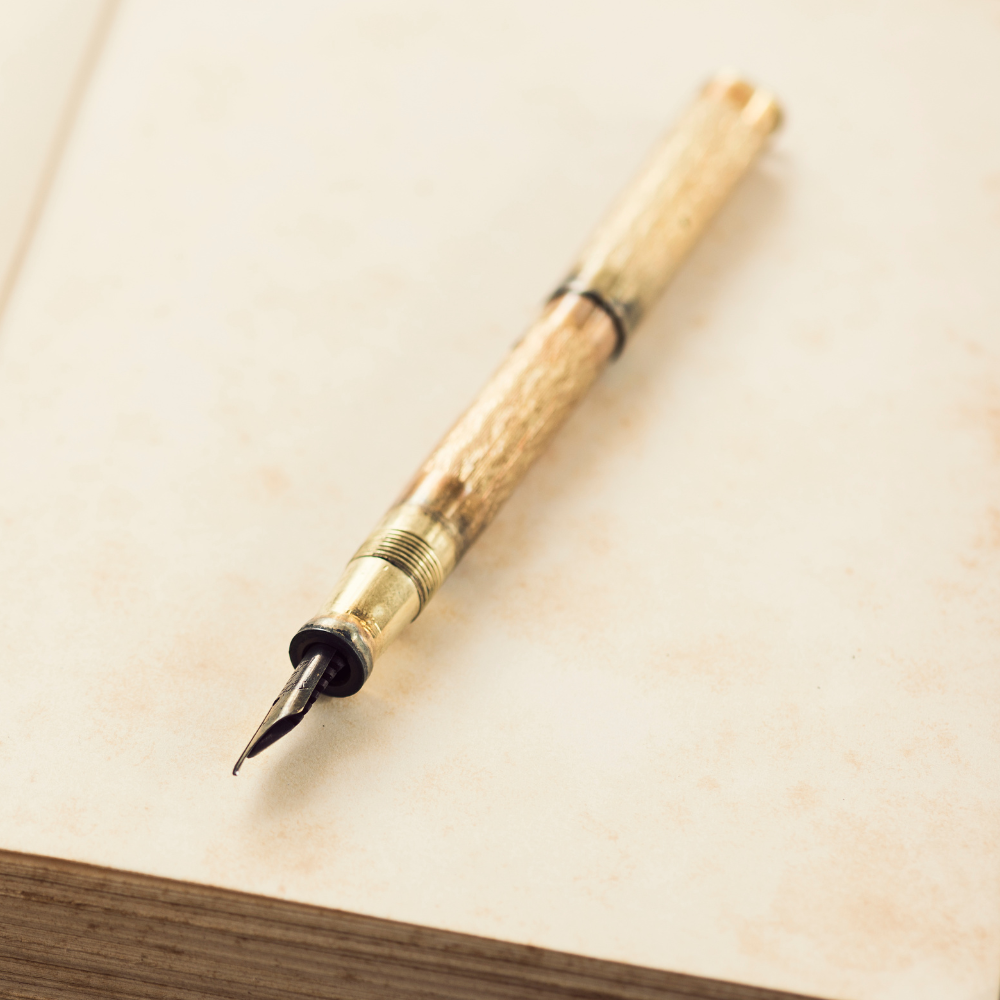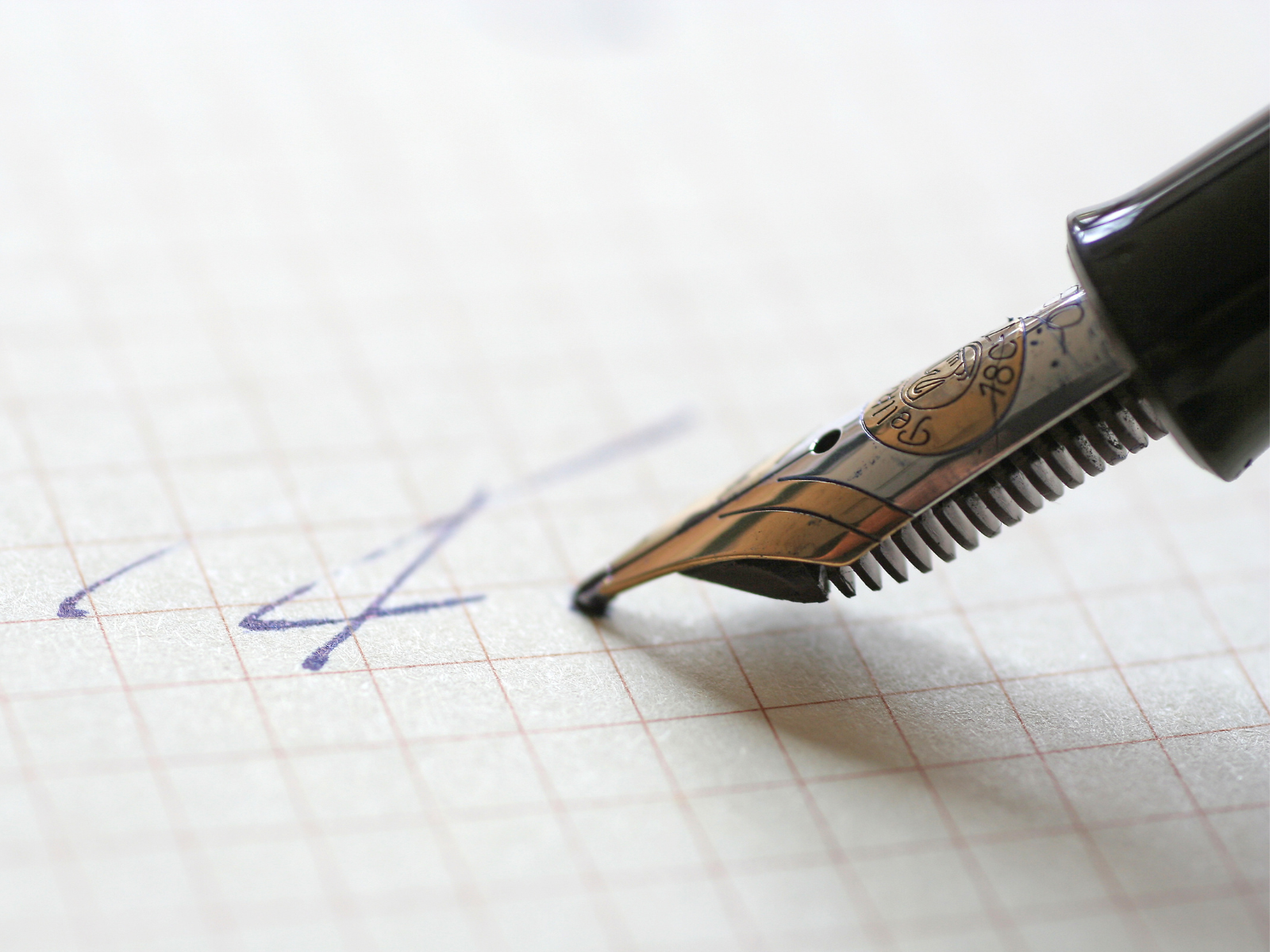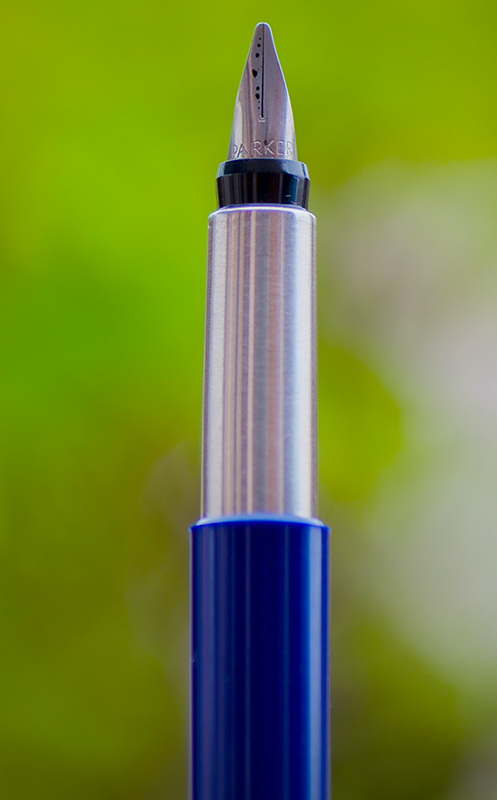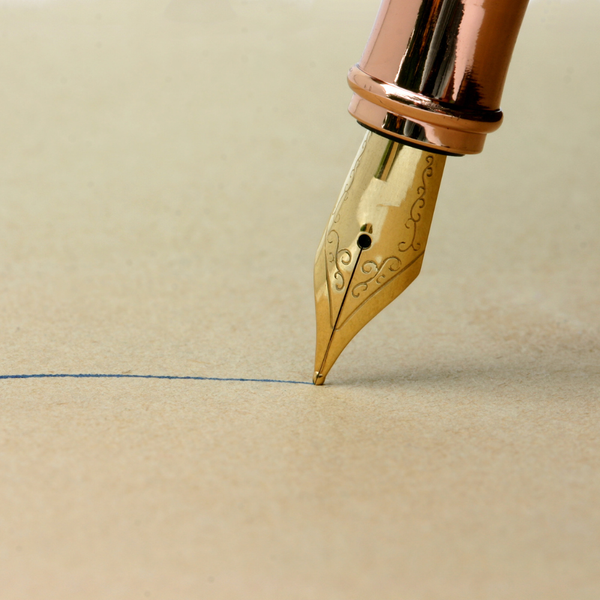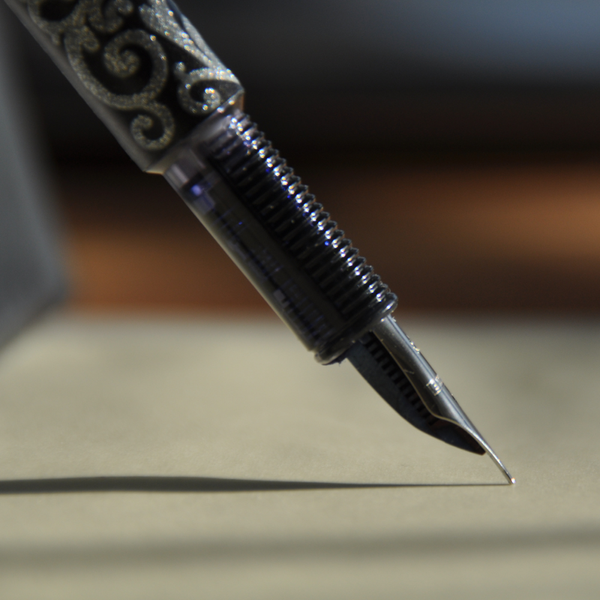Hey there, fellow artists and pen enthusiasts!
Do you envy those people with beautiful, flowing script?
Well, grab a seat and prepare to have your mind blown because we're diving into the world of fountain pens and how they can take your penmanship from meh to magnificent!
Whether you're a beginner or a seasoned pro, we've all struggled with legible handwriting at some point.
Handwriting is a personal signature, a form of expression that is unique to each individual.
In the digital age, the art of penmanship may seem like a relic of the past, but it remains an essential skill for personal and professional communication.
Many have discovered that their handwriting dramatically improves when using a fountain pen.
But fear not, because today we're going to uncover the secret behind why our handwriting magically improves when we put pen to paper with a fountain pen.
Trust me, this ain't your average ballpoint pen experience.
Buckle up, folks; it's time to unleash the power of perfect penmanship!
Get ready to revolutionize the way you write, because once you dip into the magical world of fountain pens, you'll never look back!
Key Takeaways:
- Fountain pens can enhance handwriting quality due to their unique nib design and ink flow, which encourage better writing form and less pressure.
- The variety of nib sizes and types available with fountain pens allows for greater control and personalization of writing style.
- Using a fountain pen can reduce hand fatigue and make the writing process more enjoyable, leading to improved handwriting over time.
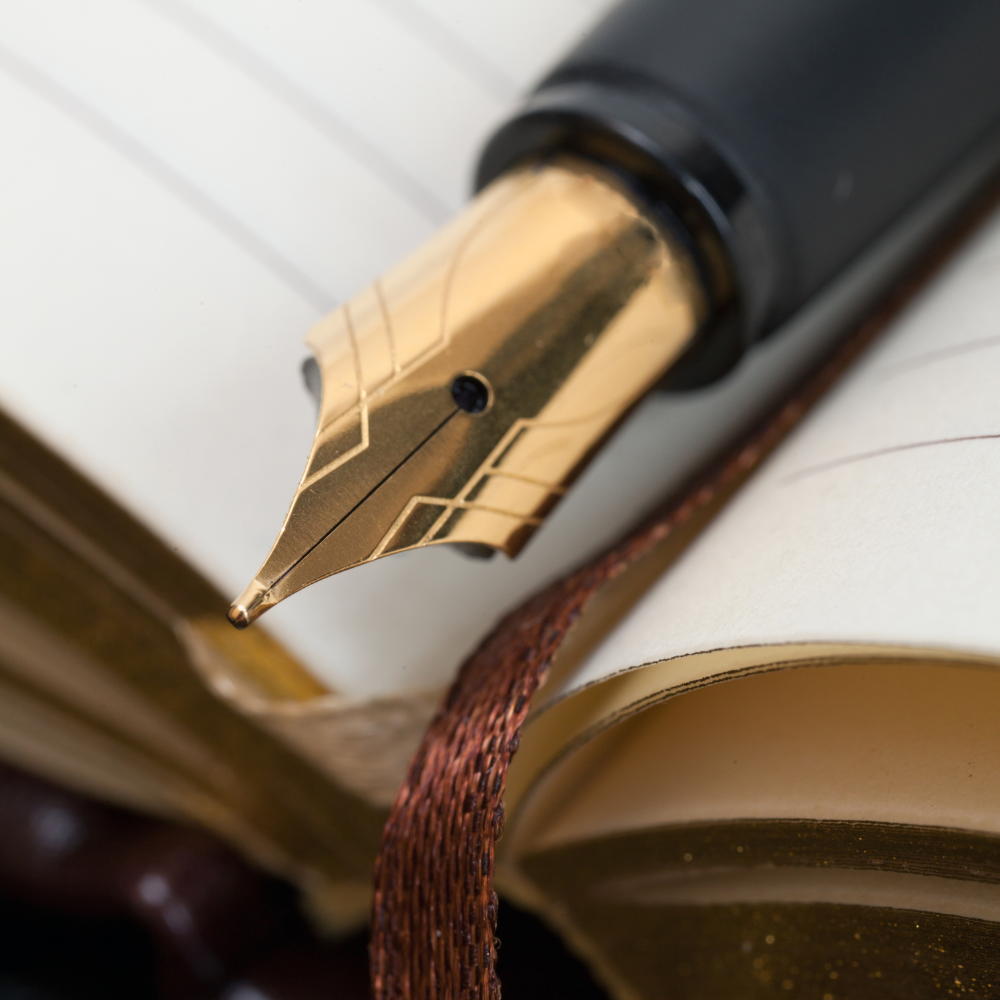

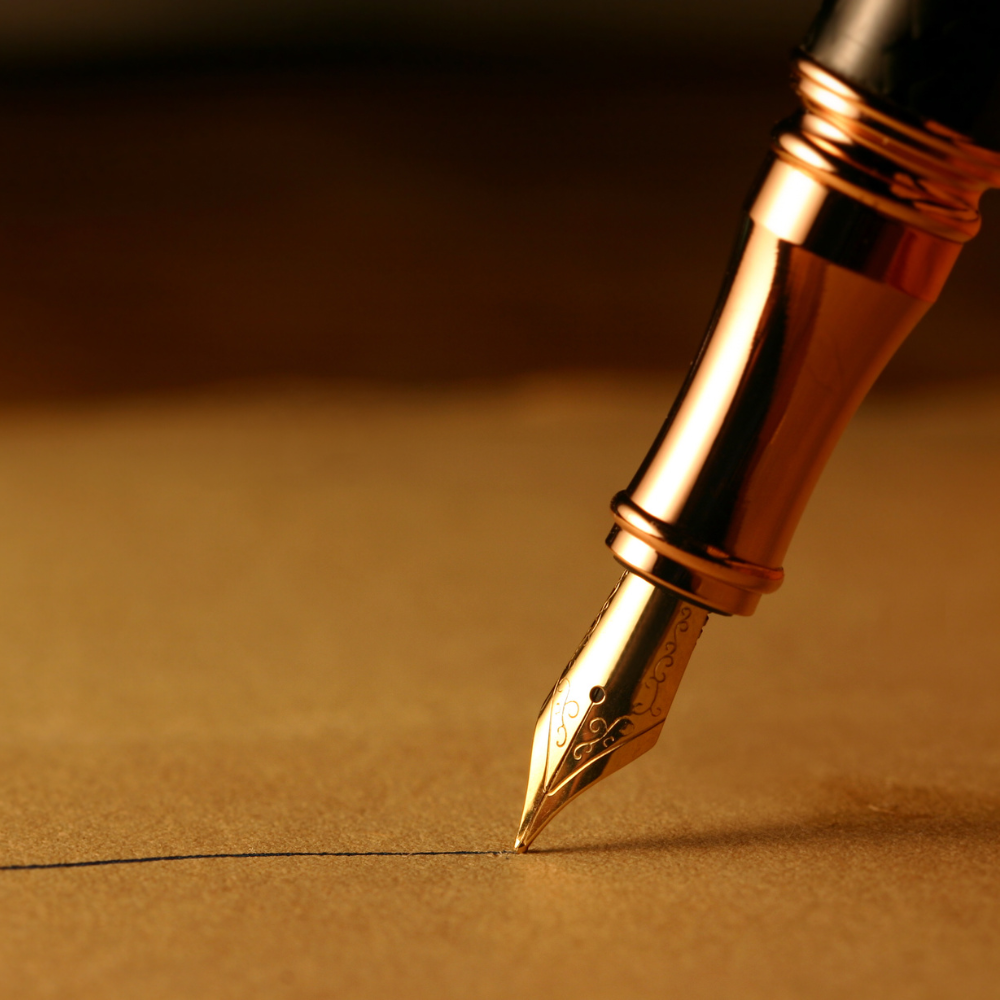
Fountain Pen Fundamentals
Have you ever noticed the graceful dance of ink on paper when using a fountain pen?
It's not just your imagination.
Fountain pens are not just writing instruments; they're a gateway to flawless script and unrivaled hand comfort.
As a content creator, you might have wondered why your handwriting improves when you use a fountain pen.
It's a peculiar phenomenon, but there's actually a fascinating science behind it.
When it comes to writing, the right tool can make all the difference.
Fountain pens have long been cherished by calligraphers, writers, and anyone who appreciates the art of penmanship.
Unlike a ballpoint pen, which uses thick, viscous ink, fountain pens use liquid ink that flows smoothly and consistently onto the paper.
This is due to the unique design of the nib, which allows for controlled ink flow and varying line widths.
The result? A smoother writing experience with less pressure required from your hand.
Say goodbye to those hand cramps and hello to effortless writing!
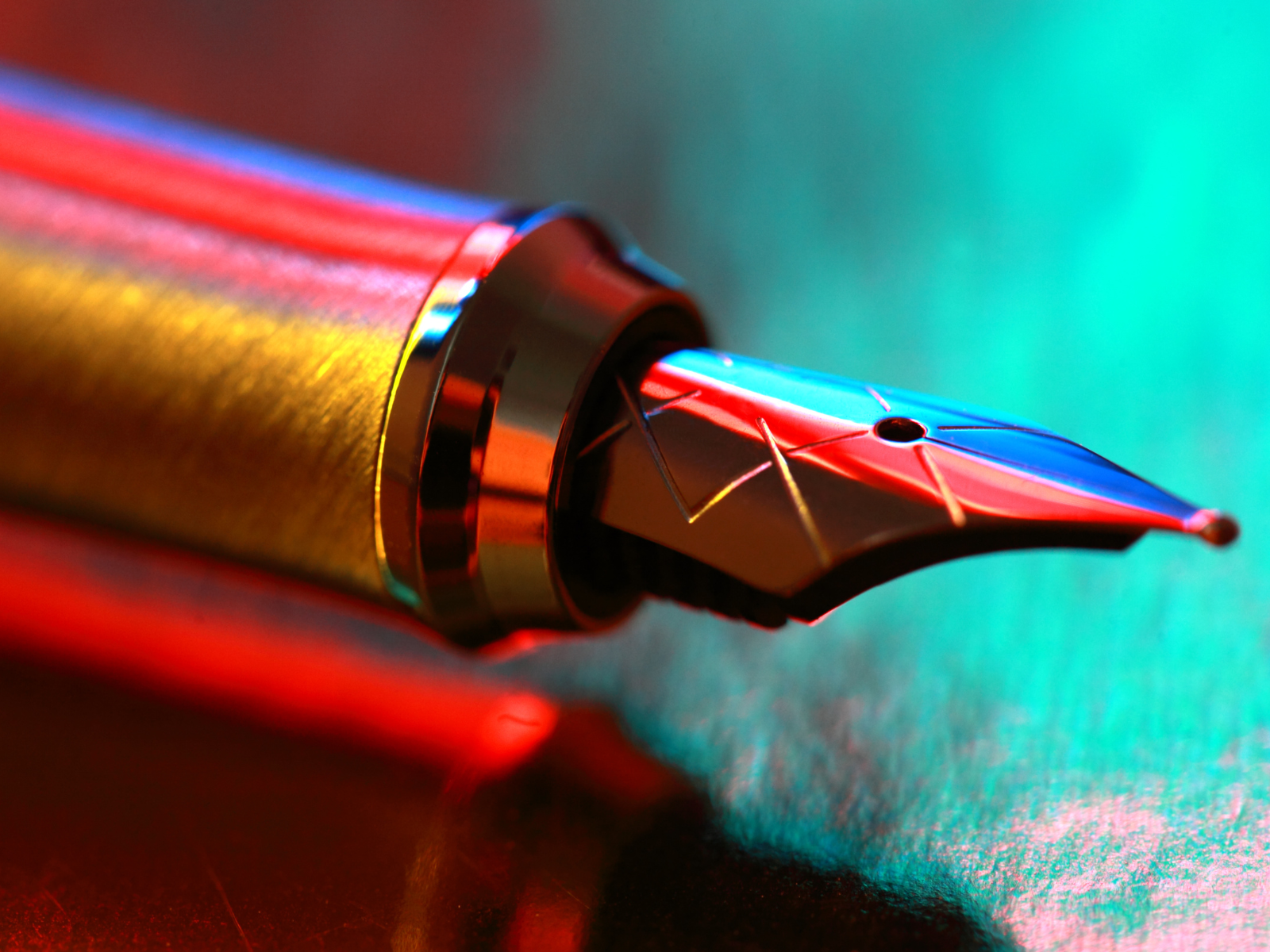
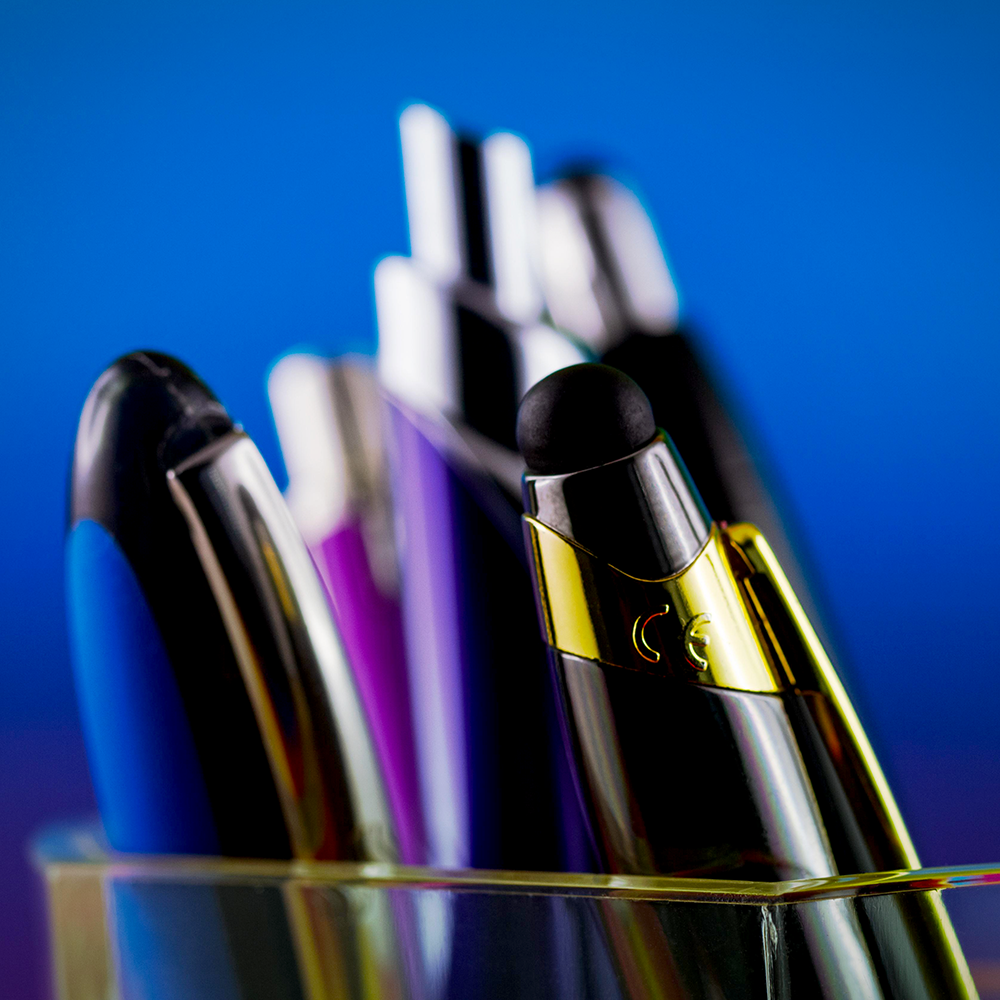

The Mechanics of Fountain Pen Nibs
The heart of a fountain pen's superiority in improving handwriting lies in its nib.
A fountain pen nib is a finely crafted metal tip that splits into two tines.
This split allows for a controlled flow of ink, which is regulated by the slight pressure applied during writing.
Unlike ball point pens, which require more pressure to release oil-based ink, fountain pen nibs work with gravity and capillary action, allowing for a smoother writing experience.
The Role of Nib Flexibility
Flex nibs are a type of fountain pen nib that offer varying line widths based on the pressure applied.
This flexibility encourages a more dynamic and expressive handwriting style.
As you write, the tines of a flex nib spread apart slightly, releasing more ink and creating a thicker line.
When less pressure is applied, the line becomes finer.
This responsiveness to pressure can train the hand to use a more relaxed grip, which often results in better handwriting.
The Influence of Ink Flow on Handwriting
Ink flow is another critical factor that contributes to the improved handwriting many experience with fountain pens.
Fountain pen ink is water-based, allowing it to flow more freely from the reservoir through the nib and onto the paper.
This liquid ink requires less force to write with than the oil-based ink found in regular ballpoint pens, leading to a more effortless and fluid writing process.
Consistency of Writing with Liquid Ink
The consistency of liquid ink from a fountain pen makes for a more uniform writing experience.
As the ink flows evenly, it reduces the likelihood of skips and blobs that can occur with gel pen or ball pen ink.
This consistency helps maintain a steady rhythm in writing, which is crucial for developing good handwriting.

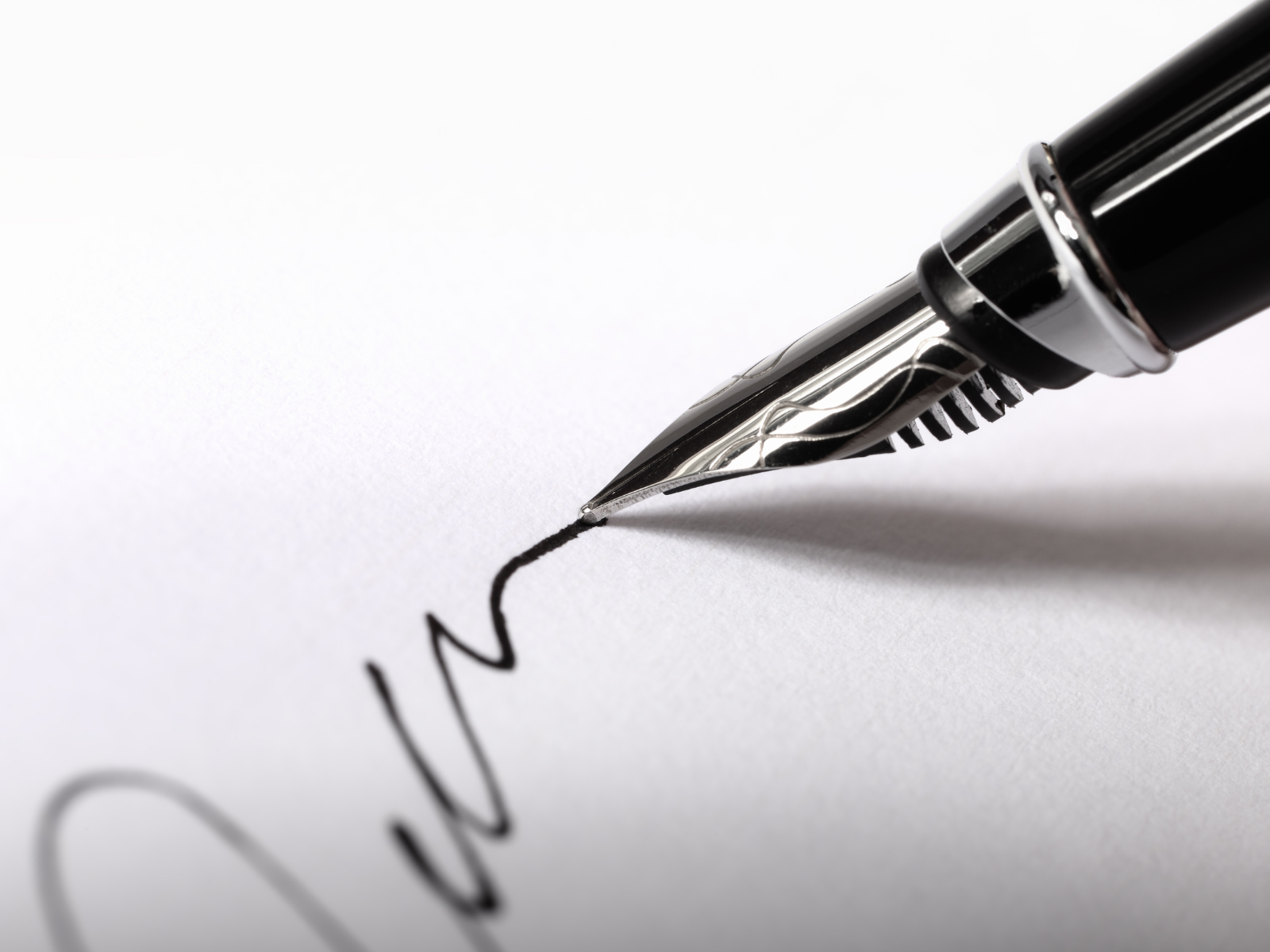

The Ergonomics of Fountain Pens
Fountain pens are often designed with ergonomics in mind.
A good fountain pen typically has a balanced weight and an ergonomic grip that makes it comfortable to hold for longer periods.
This comfort reduces hand fatigue and allows for a more relaxed hand position, which is conducive to improving handwriting.
How a Relaxed Grip Improves Handwriting
A relaxed grip facilitated by the ergonomic design of fountain pens can lead to less tension in the hand and arm.
This relaxation is essential for smooth, flowing cursive writing or for crafting beautiful letters in print.
When the hand is not strained, it can move more freely, allowing for better control and precision in handwriting.
The Aesthetic Appeal of Fountain Pens
The aesthetic appeal of fountain pens, from their design to the different shades of bottled ink available, can also play a role in enhancing handwriting.
Many writers find that the beauty of the pen and the ink inspires them to put more effort into their handwriting, striving to create writing that matches the elegance of the tools they are using.
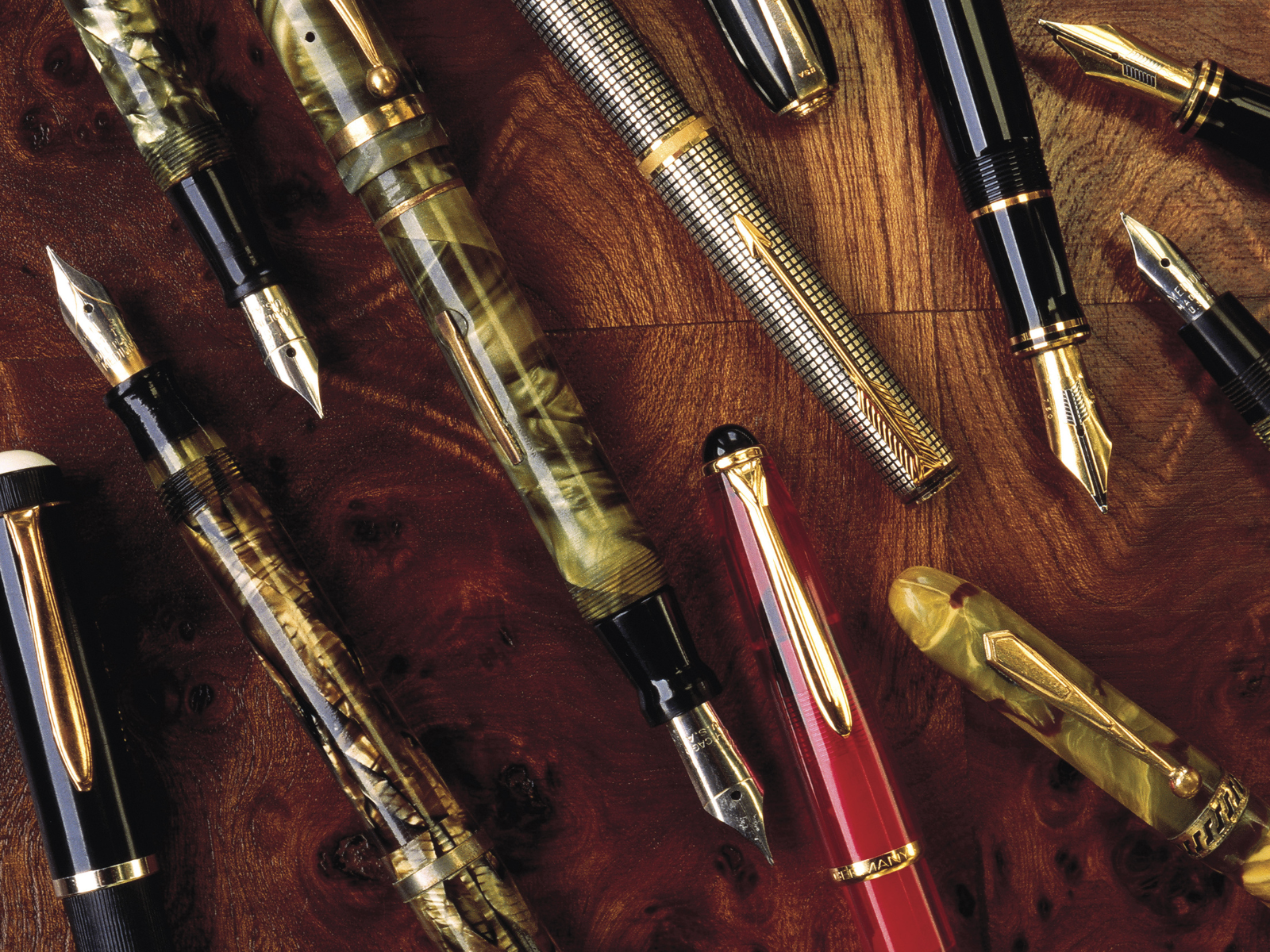
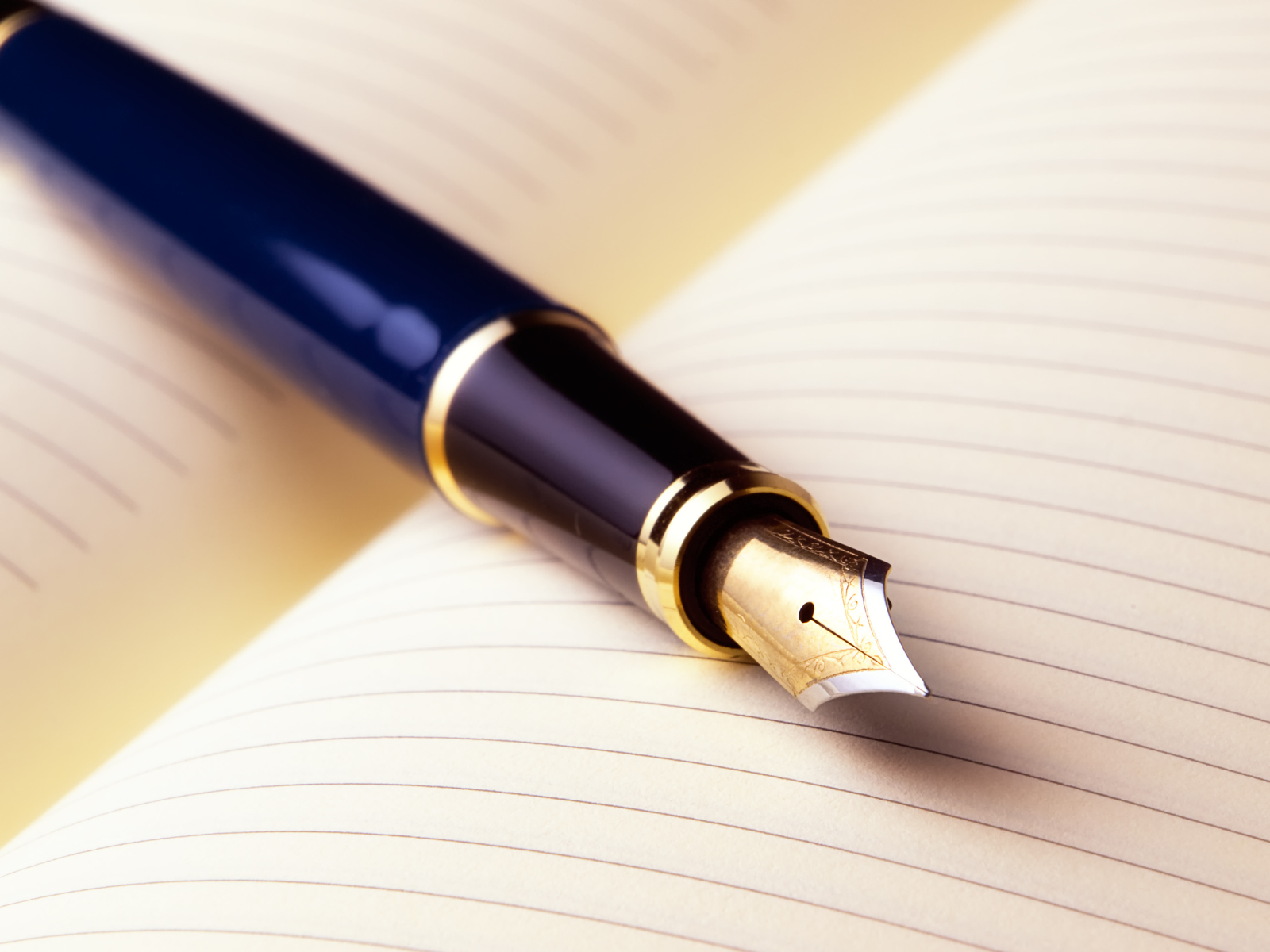
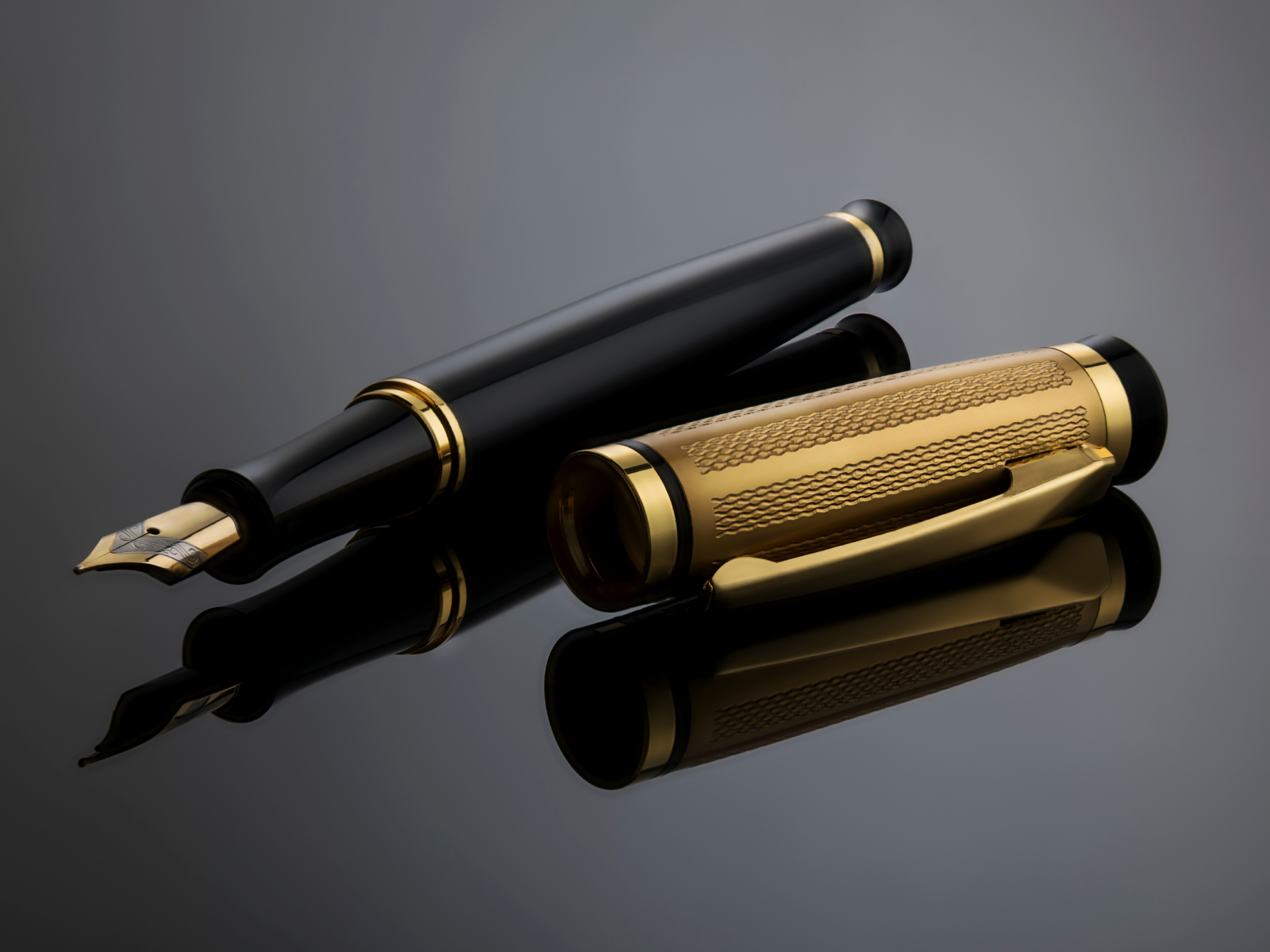
Using Fountain Pens
Writing with a fountain pen can be a psychological boost to your writing process.
The act of using a more traditional and elegant writing instrument like a fountain pen can instill a sense of importance and care in your written communication.
This mindset often translates into taking more time to write slowly and deliberately, which can significantly improve your handwriting.
The Historical Evolution of Writing Instruments
The journey from quill to ballpoint pen has been a long one, with each innovation offering a unique contribution to the way we write.
The fountain pen, a successor to dip pens, revolutionized writing by incorporating an internal reservoir for liquid ink.
This advancement allowed for a continuous and more convenient flow of ink compared to its predecessors, which required frequent dipping.
The fountain pen's ability to provide a smoother writing experience quickly made it a favorite among those who valued both efficiency and elegance in their handwriting.
In contrast, the introduction of the ballpoint pen brought a different kind of convenience.
The oil-based ink used in ballpoint pens dries faster than the water-based ink found in fountain pens, reducing the likelihood of smudging and making it more suitable for left-handed writers.
However, the thicker consistency of oil-based ink requires more pressure to be applied when writing, which can lead to a degradation in handwriting quality over time.
This is particularly noticeable when comparing the effortless flow of a fountain pen to the more laborious motion needed to operate a ballpoint pen properly.
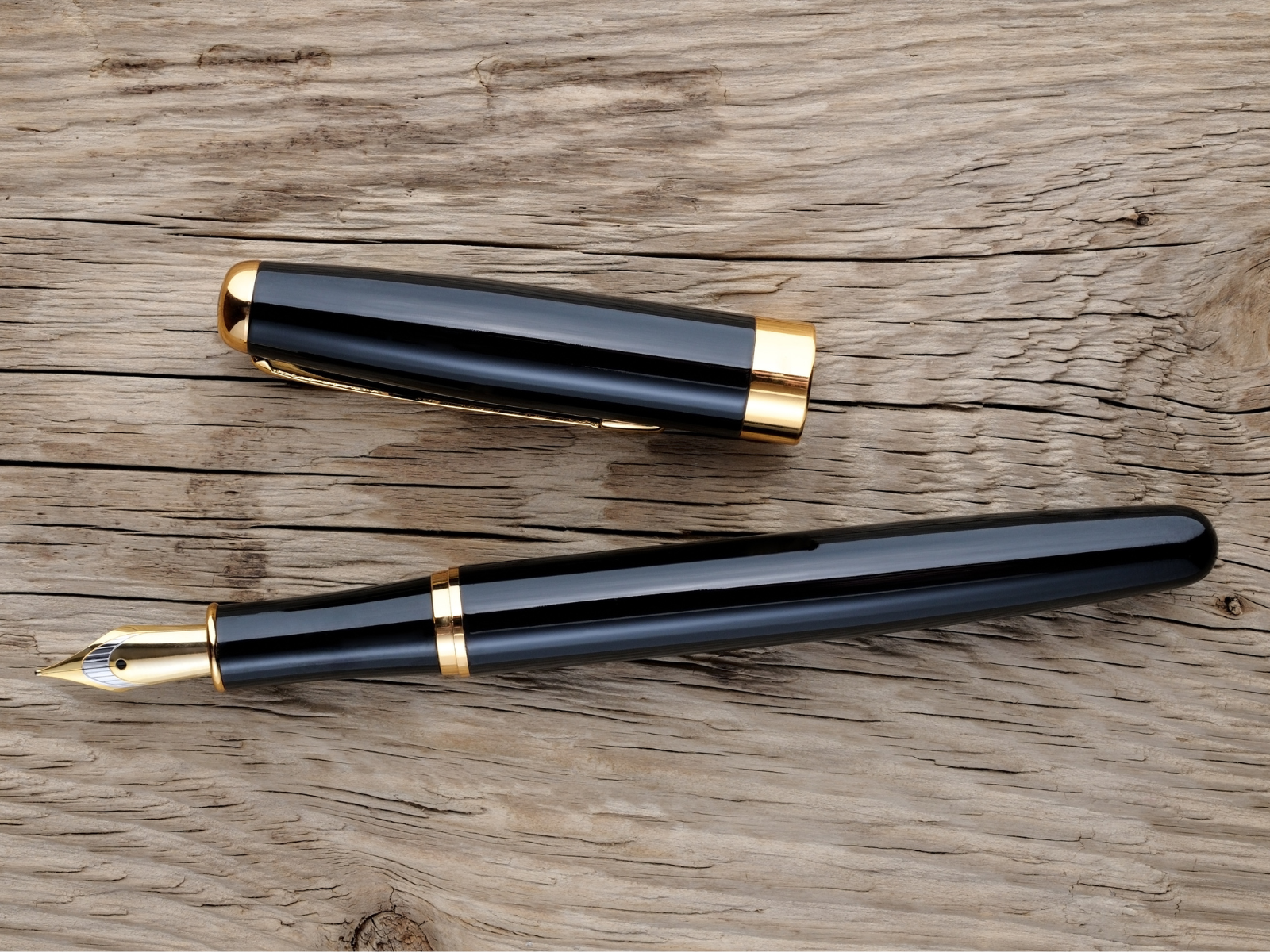
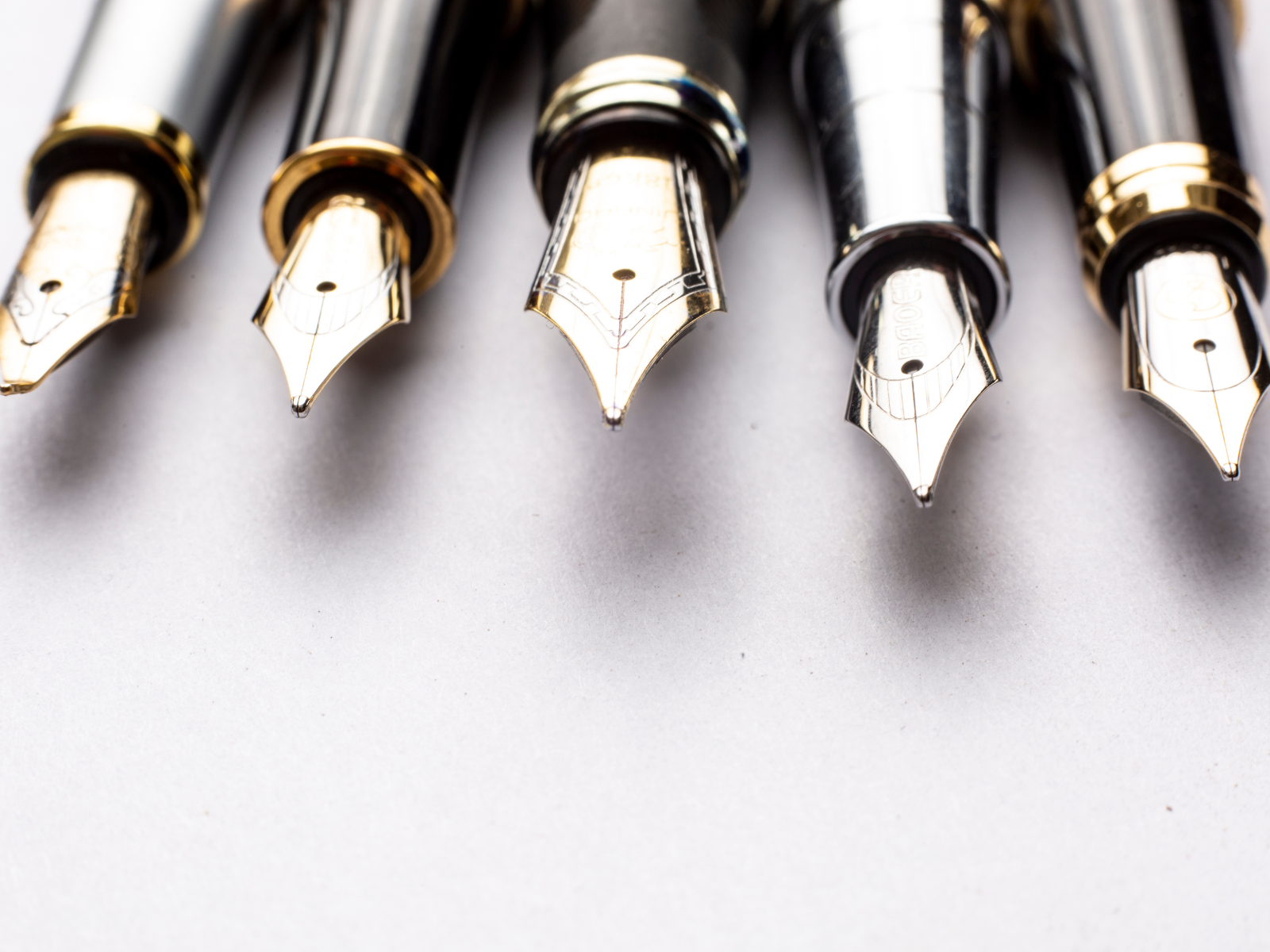

The Significance of Writing Tip Material
The material of a writing tip plays a crucial role in the handwriting experience.
When using a fountain pen, the tip, or nib, is often made of gold, silver, or stainless steel, which provides a smooth interaction with paper.
Gold nibs, in particular, are prized for their softness and flexibility, allowing for a more expressive writing style.
The choice of tip material can affect the distribution of oil-based ink, as some metals interact differently with the ink's viscosity.
A well-crafted tip will ensure that the whole pen functions harmoniously, delivering a consistent line and enhancing the overall writing quality.
In contrast, cheaper materials may lead to scratchiness and an uneven flow of ink, which can disrupt the writing process.
It's essential to consider the compatibility of the writing tip with the type of ink used.
Oil-based ink, for instance, requires a tip that can handle its thicker composition without clogging.
Enthusiasts often discuss their preferences for tip materials at pen shows, where they can also test different nibs.
The right writing tip can transform the act of writing into a luxurious experience, encouraging users to start writing more frequently and with greater satisfaction.
Personalization Through Nib Options
Fountain pens offer a variety of nib options, from extra fine nib to broad, and even specialty nibs like stub or italic.
These different nibs can cater to individual handwriting styles and preferences, allowing for more control over line variation and overall appearance of the handwriting.
Finding the Right Nib Size for Your Handwriting Style
Choosing the right nib size is crucial for good penmanship.
A fine or extra fine nib might suit those with smaller handwriting, while a broader nib can add character to larger handwriting.
The ability to select a nib that complements your handwriting style is a significant advantage of fountain pens over other pens.

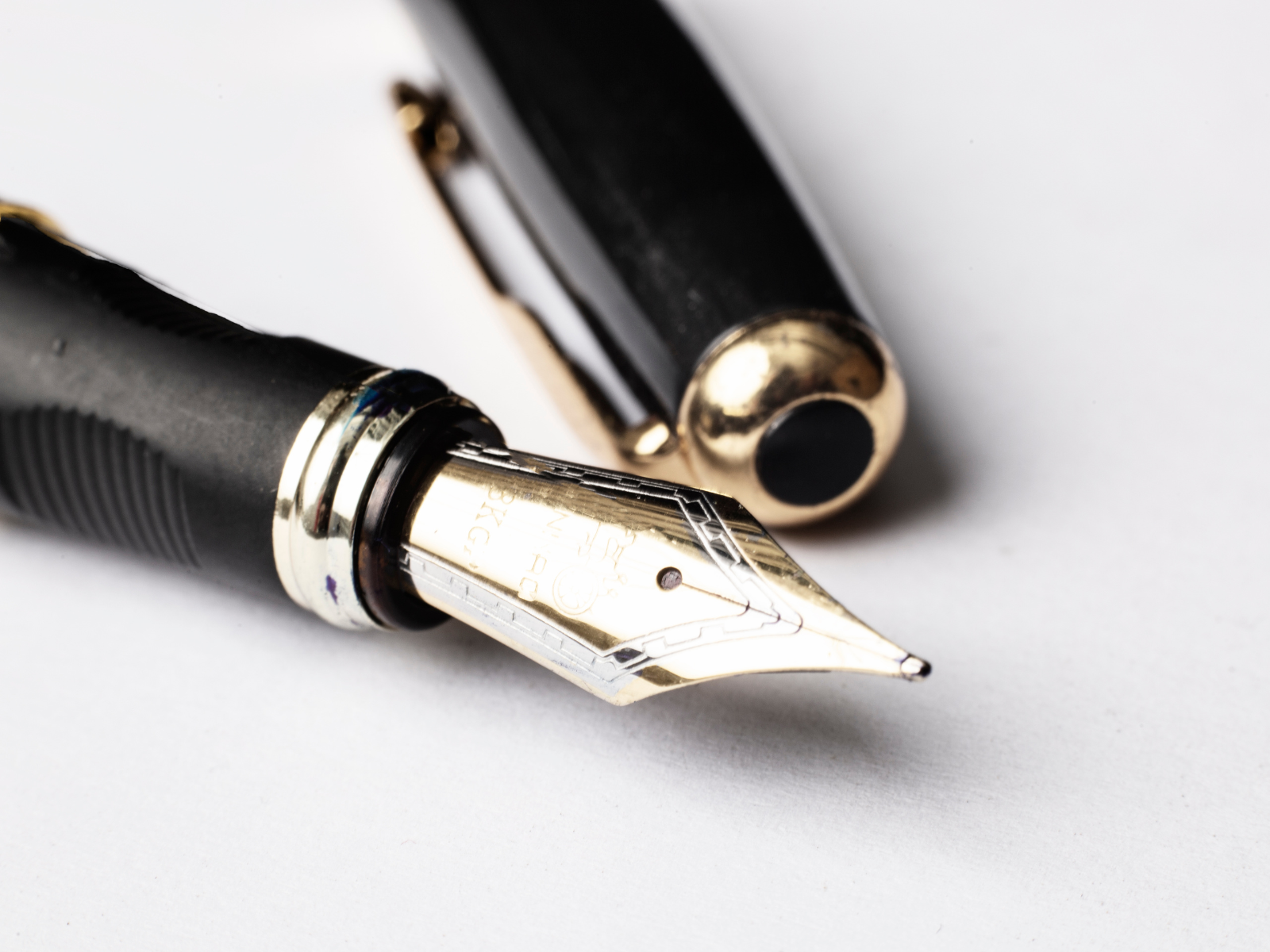
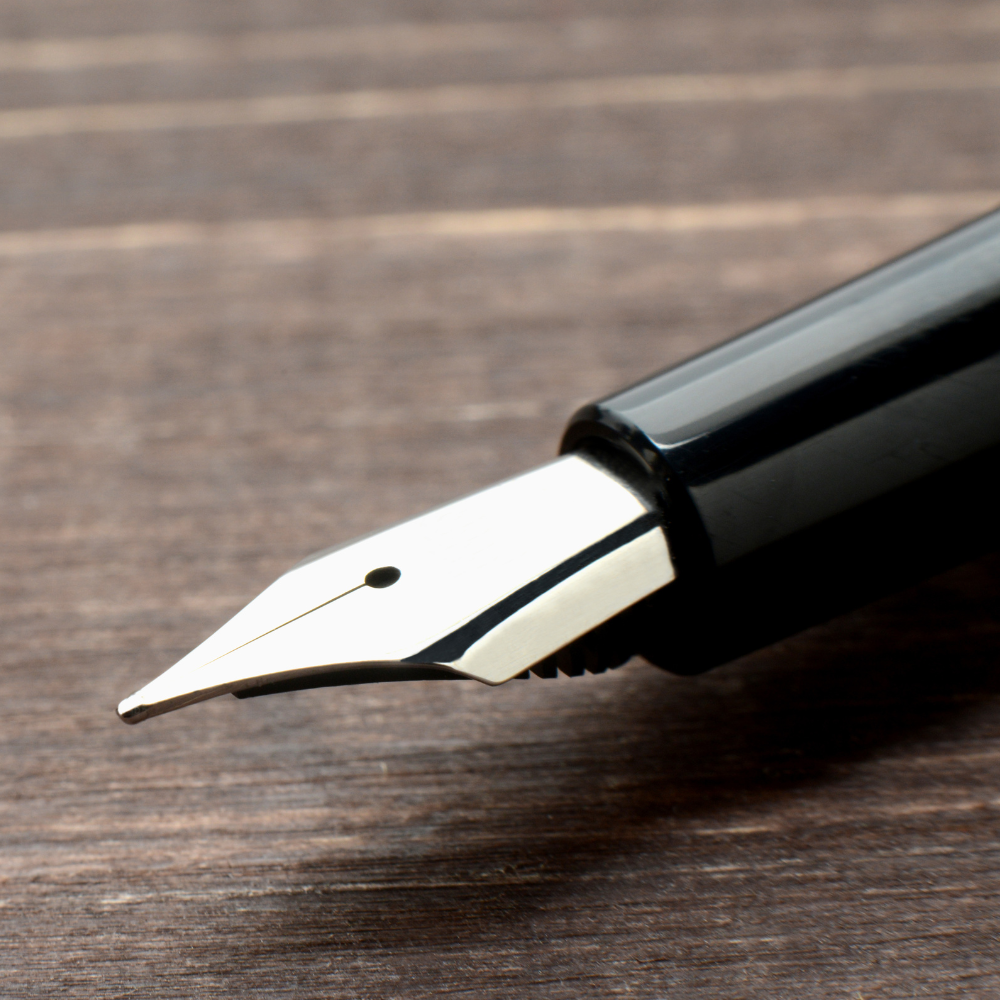
The Impact of Paper on Fountain Pen Writing
The type of paper used can also affect handwriting quality when using a fountain pen.
Fountain pen friendly paper is typically smoother and more resistant to bleeding and feathering, which can occur with more absorbent papers.
Writing on high-quality paper can enhance the writing experience and contribute to better handwriting.
How Paper Quality Influences Ink Performance
The smooth surface of quality paper allows the fountain pen nib to glide across without snagging, which can disrupt the flow of writing.
This smooth interaction ensures that the ink performs at its best, laying down a clean and consistent line that can improve the overall legibility and aesthetics of handwriting.
The Artistry of Ink in Handwriting
Ink colors play a significant role in the personalization of handwriting with a fountain pen.
Unlike ballpoint pens, which are often limited to standard blue and black inks, fountain pens offer a vast spectrum of ink colors, including vibrant hues and subtle shades.
This variety allows writers to express their personality and mood through their choice of ink, adding an artistic touch to the written word.
Archival inks are also available for those who want their writing to stand the test of time without fading or degradation.
Moreover, the type of ink used can influence the overall writing experience.
Different inks have varying properties such as flow, saturation, and drying time, which can affect the pen tip's interaction with paper.
When a writer starts using a fountain pen with high-quality ink, they often notice an immediate improvement in their hand writing.
The right pen paired with the right ink can turn the mundane act of writing into a delightful sensory experience, encouraging writers to practice more and, consequently, improve their poor handwriting.
Calligraphy and Hand Lettering Using Fountain Pens
Fountain pens are not just for everyday writing; they can also be used for more elaborate writing styles like calligraphy and hand lettering.
The flexibility and control offered by fountain pen nibs make them suitable for creating beautiful, intricate designs with varying line widths.
With the right combination of pen, ink, and paper, anyone can learn the art of calligraphy and hand lettering using a fountain pen, elevating their handwriting to new levels of artistry.
Benefits of Handwriting Practice with Fountain Pens
Regular handwriting practice with a fountain pen can lead to long-term improvements in handwriting quality.
The combination of a good pen, the right ink, and consistent practice can transform even the most challenging handwriting into a more refined and polished style.


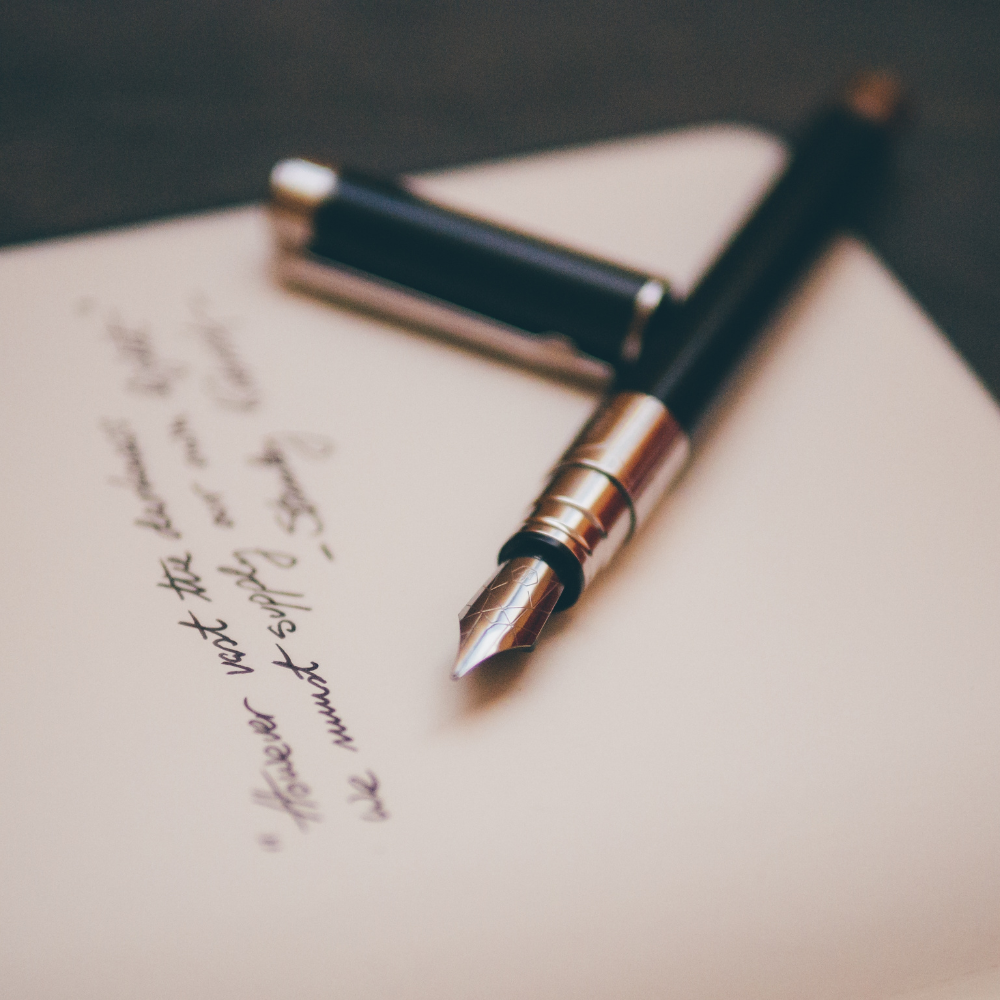
Resurgence of Oil-Based Ink in Modern Writing
The recent revival of traditional writing instruments has brought oil-based ink back into the limelight.
Unlike its water-based counterparts, oil-based ink offers a unique smoothness that many fountain pen enthusiasts swear by.
Its composition allows for a consistent line without the risk of feathering, which is often a concern with more fluid inks.
This type of ink is particularly favored for its permanence and resistance to water, making it an ideal choice for important documents and artwork that require longevity.
Moreover, oil-based ink has a distinct drying process that contributes to its enduring popularity.
While it may take longer to dry compared to other inks, this slow drying time reduces the likelihood of smudging, which is a common issue for left-handed writers.
The deliberate nature of writing with oil-based ink also encourages a more thoughtful and measured approach to handwriting, often resulting in neater and more deliberate script.
This characteristic is particularly beneficial for those who take pride in the presentation of their written work.
The Technical Advantages of Oil-Based Ink in Fountain Pens
When it comes to the technical aspects of using oil-based ink in fountain pens, there are several advantages that contribute to improved handwriting.
The viscosity of oil-based ink is generally higher than that of water-based inks, which means it flows less freely from the nib.
This can lead to greater control over the pen, allowing for more precise letter formation and a steadier hand.
Additionally, the thicker consistency of oil-based ink can prevent bleeding and ghosting on paper, ensuring a cleaner and more professional appearance.
Furthermore, oil-based ink is less prone to evaporation and clogging, which can be a significant issue with some fountain pens.
This means that pens loaded with oil-based ink are often more reliable and require less maintenance.
For individuals who use their fountain pens infrequently, oil-based ink can be a practical choice, as it is less likely to dry out in the pen between uses.
This reliability and ease of use make oil-based ink a preferred option for both seasoned fountain pen users and those new to the world of fine writing instruments.
The Versatility of Oil-Based Inks in Fountain Pen Writing
The versatility of oil-based inks in fountain pen writing is often overlooked, yet it is a key factor in their appeal.
These inks are compatible with a wide range of writing surfaces, from traditional paper to more unconventional materials like coated papers and even some plastics.
This adaptability makes oil-based inks a go-to choice for artists and professionals who require their work to be presented on diverse mediums.
Additionally, the rich and vibrant colors achievable with oil-based inks are unmatched, providing a depth and saturation that brings life to every stroke of the pen.
Furthermore, oil-based inks offer a unique tactile sensation that is distinct from their water-based counterparts.
The slightly thicker consistency of the ink allows for a controlled and deliberate application, which can be particularly satisfying for those who take pleasure in the physical act of writing.
Whether it's for artistic endeavors, professional tasks, or personal correspondence, the use of oil-based ink in fountain pens provides a level of control and artistic expression that is highly valued by aficionados of the written word.
Distinctive Characteristics of Oil-Based Ink on Quality
When it comes to the impact of oil-based ink on handwriting quality, the differences can be quite pronounced.
The higher viscosity of oil-based ink requires a firmer pressure to be applied during writing, which can lead to more deliberate and controlled pen strokes.
This can be particularly advantageous for individuals looking to improve their handwriting, as it encourages a more mindful approach to writing, potentially leading to neater and more consistent handwriting over time.
In addition, the permanence of oil-based ink is a factor that can influence the psychological approach to writing.
Knowing that the ink is less prone to fading or water damage may instill a sense of permanency and importance to the written word, prompting writers to take extra care in their penmanship.
This can result in handwriting that is not only aesthetically pleasing but also crafted with a greater level of intention and attention to detail.

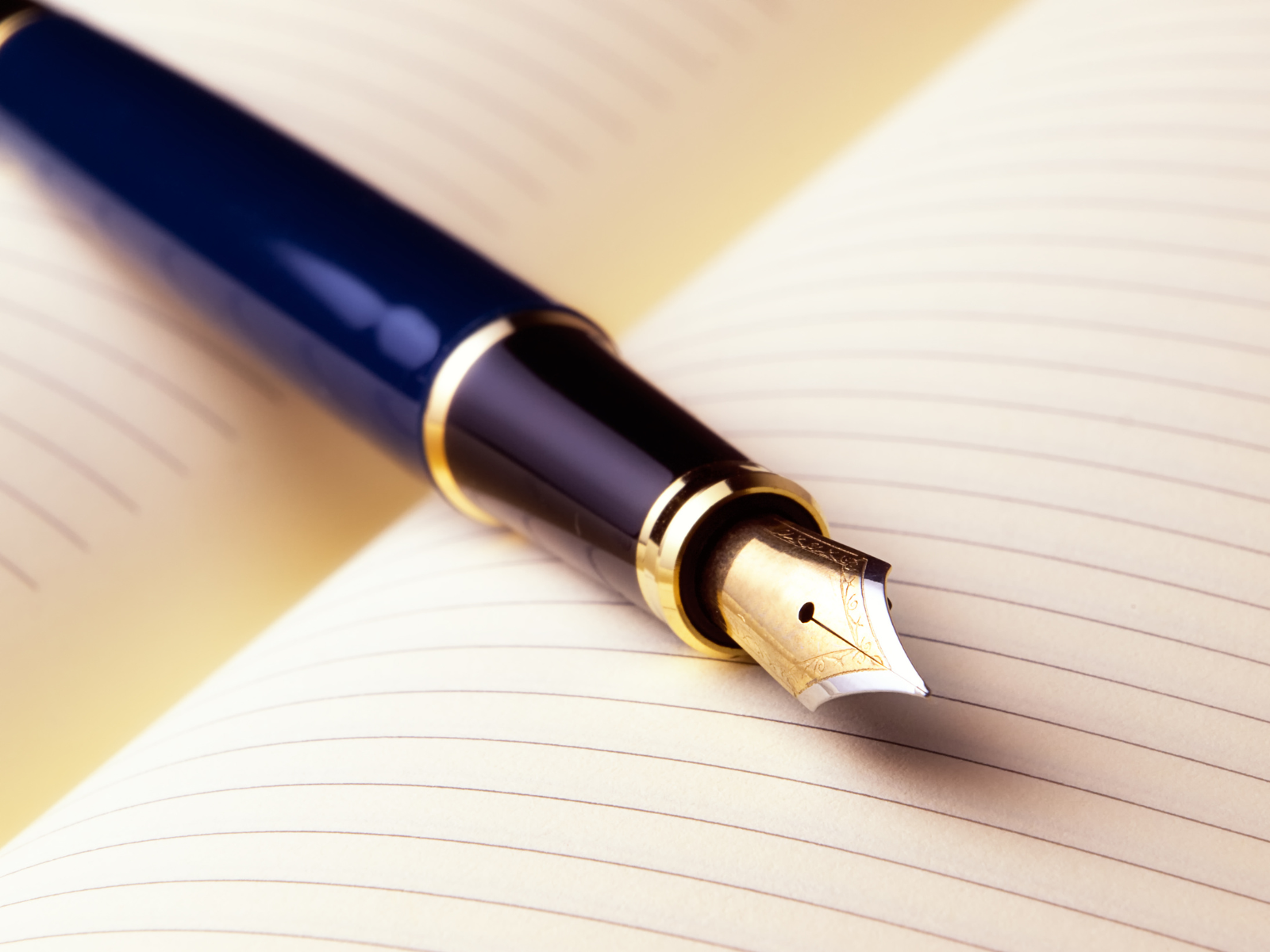

Compatibility of Oil-Based Inks
Oil-based inks are not commonly used in fountain pens, but their unique properties can offer a different writing experience.
Unlike water-based inks, oil-based inks tend to be more viscous and resistant to smudging once dry.
This can be particularly beneficial for left-handed writers who may struggle with smearing when using traditional fountain pen inks.
The slower drying time of oil-based inks requires patience, but the payoff is a crisp, clear line that stands the test of time and handling.
However, it's important to note that not all fountain pens are compatible with oil-based inks.
The thicker consistency can clog the delicate feed systems of some pens, leading to inconsistent ink flow and potential damage to the pen.
It's essential to research and use fountain pens specifically designed for or compatible with oil-based inks to avoid any issues.
Some manufacturers offer pens with broader channels in the feed to accommodate the thicker ink, ensuring a smooth writing experience.
Unlike water-based inks, oil-based inks are less prone to fading and water damage, making them an excellent choice for important documents and archival work.
The robust nature of oil-based ink means that it adheres well to the paper fibers, resulting in crisp and enduring lines that stand the test of time.
This permanence is particularly beneficial for those who require their writing to remain legible for years to come, such as legal professionals and historians.
Moreover, the slow drying time of oil-based inks can be an advantage for fountain pen enthusiasts who appreciate the meticulous process of writing.
While it may require a bit more patience, the end result is a smudge-resistant finish that maintains its integrity.
This characteristic of oil-based ink also allows for a smoother writing experience, as the ink does not dry out quickly on the nib, ensuring a consistent flow during extended writing sessions.
Durability and Longevity of Oil-Based Inks
The use of oil-based inks in fountain pens is not just a matter of preference but also one of durability.
Oil-based inks are renowned for their long-lasting qualities, as they are less likely to fade over time compared to their water-based counterparts.
This makes them an excellent choice for documents that need to withstand the test of time, such as legal papers, archival records, and personal journals.
The permanence of oil-based ink ensures that your writing remains legible and vibrant for years, if not decades, making it a trusted medium for those who value the longevity of their written word.
Moreover, oil-based inks are less prone to smudging once they have dried on the paper, which is a significant advantage for left-handed writers who may struggle with smearing when using faster-drying, water-based inks.
The resilience of oil-based ink against elements like water and light contributes to the preservation of important writings.
This aspect of oil-based inks is particularly beneficial for artists and professionals who require their work to maintain its integrity under various conditions, thereby enhancing the overall quality and durability of their handwritten projects.
Oil-based inks are known for their long-lasting qualities.
They are resistant to water once dry, which means that documents written with oil-based ink are more durable over time.
This is an essential feature for archival work or for professionals who require their written records to withstand the test of time.
The permanence of oil-based ink ensures that signatures, legal documents, and artistic works maintain their integrity and legibility, safeguarding the writer's intent and the document's authenticity for years to come.
Versatility of Oil-Based Inks in Different Writing Environments
Oil-based inks offer a level of versatility that is unmatched by other types of inks, especially when it comes to writing in different environments.
Their composition allows them to perform well in a wide range of temperatures and humidity levels, making them suitable for use in various climates without compromising the quality of the handwriting.
This adaptability is crucial for individuals who travel frequently or who need to write in outdoor settings, where conditions can be unpredictable and challenging for water-based inks.
Furthermore, the unique properties of oil-based inks mean they can be used on a variety of paper types, including glossy and coated papers where water-based inks might struggle to adhere properly.
This versatility extends the range of creative possibilities for fountain pen enthusiasts, allowing them to explore different textures and finishes in their writing and artwork.
Whether it's crafting elegant invitations, designing custom greeting cards, or taking notes in a professional setting, oil-based inks provide a reliable and high-quality writing experience across diverse paper mediums.
Compatibility and Performance of in Different Writing Environments
Oil-based inks exhibit remarkable versatility across various writing environments, making them a preferred choice for fountain pen enthusiasts who write in different settings.
Their composition allows them to perform well in both cold and warm conditions, where water-based inks might freeze or evaporate too quickly.
This adaptability ensures that whether you're jotting down notes in a chilly lecture hall or signing contracts under the hot sun, your fountain pen will deliver consistent results.
Furthermore, the compatibility of oil-based inks with a wide range of paper types adds to their appeal.
While some inks can bleed through or feather on certain papers, oil-based inks tend to sit neatly on the surface, regardless of the paper's weight or texture.
This makes them ideal for professionals who may not always have control over the paper quality they encounter, such as artists sketching on the go or business people signing documents in various offices.
The reliable performance of oil-based inks across diverse writing surfaces ensures that your writing remains sharp and professional in any situation.



The Environmental Aspect of Fountain Pens
Fountain pens are not only beneficial for handwriting but also for the environment.
Unlike disposable ball points or gel pens, fountain pens are refillable, reducing waste.
The use of bottled ink instead of plastic cartridges is an environmentally friendly choice that many conscientious writers appreciate.
The Sustainability of Fountain Pen Ink
Bottled ink for fountain pens is often available in glass bottles, which are more easily recyclable than plastic.
Additionally, the longevity of a good fountain pen means that it can be a lifetime writing instrument, further reducing the environmental impact compared to disposable writing instruments.
The Cultural Phenomenon of Pen Shows
Pen shows have become cultural phenomena, gathering fountain pen enthusiasts from around the globe to celebrate the artistry and craftsmanship of writing instruments.
These events offer a unique opportunity for individuals to explore a vast array of pens, from vintage models to the latest innovations.
Attendees can find whole pen setups tailored to their preferences, including pens with specific nib types, ink formulations, and ergonomic designs.
Pen shows also serve as educational platforms where one can learn about the nuances of oil-based ink versus water-based varieties, and the impact they have on writing performance.
Moreover, pen shows are excellent venues for networking with fellow aficionados and industry experts.
They provide a space for sharing tips on pen maintenance, writing techniques, and even calligraphy lessons.
For those looking to start writing with a fountain pen, these shows offer hands-on experiences to find the perfect pen.
From finding a pen with the right weight and balance to selecting a writing tip that glides effortlessly across the page, pen shows are invaluable for both novices and seasoned collectors alike, fostering a community passionate about the timeless art of writing.
The fountain pen community is a passionate and welcoming one, with a strong focus on tradition and craftsmanship.
This camaraderie can inspire and motivate you to take your handwriting to the next level.
Whether it's attending pen shows, joining online forums, or simply connecting with other fountain pen enthusiasts, there's a wealth of resources and support available to help you improve your penmanship.
It's a community that values quality, beauty, and individuality, and through it, you can discover your own unique style and voice.
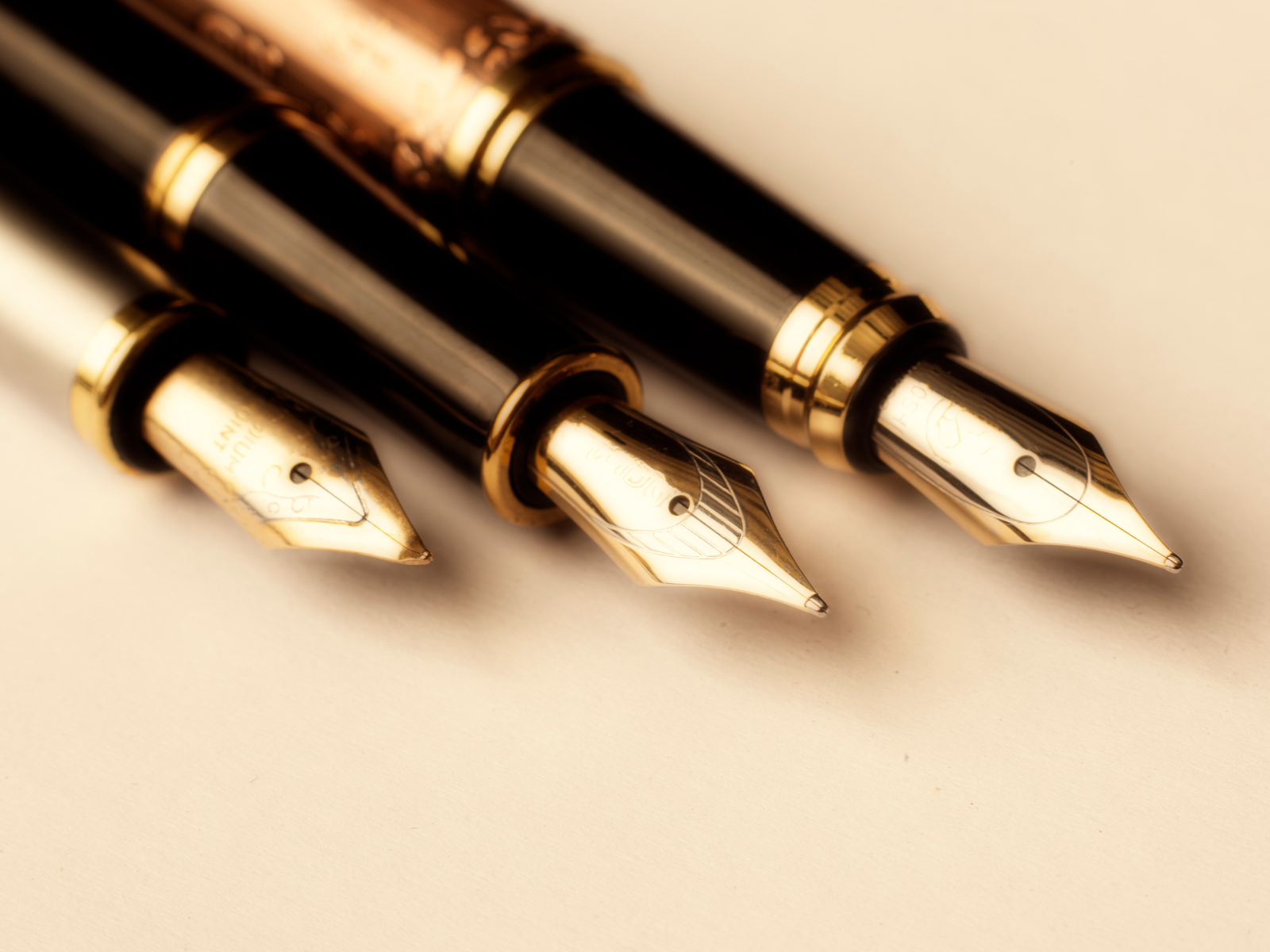

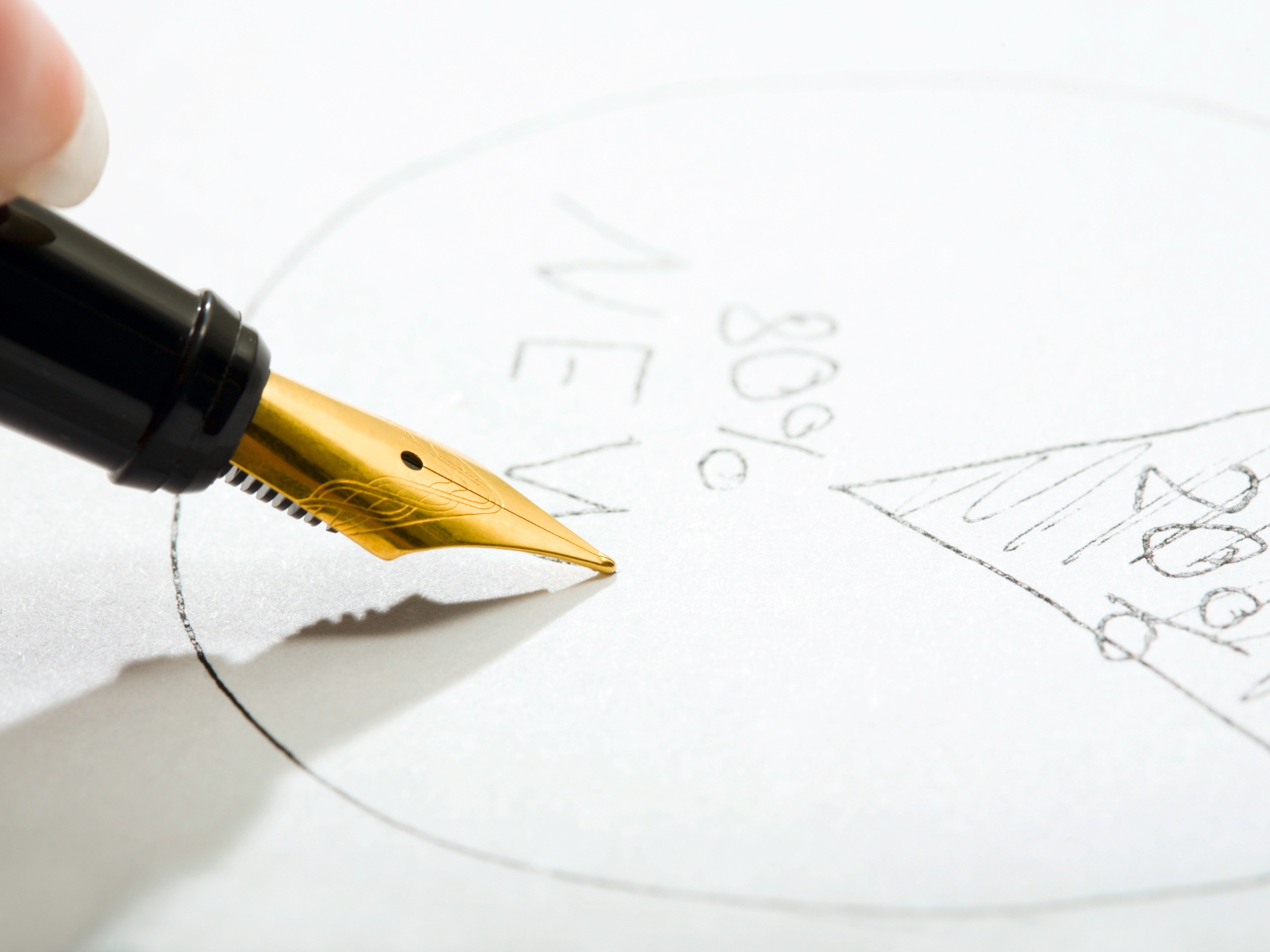
Perfected Penmanship with Fountain Pens
The beauty of writing with a fountain pen lies in its ability to transform the simple act of writing into an enjoyable, even indulgent experience.
With their ergonomic design, smooth ink flow, customizable nibs, and variety of colors, fountain pens can significantly improve handwriting quality.
Fountain pens have a unique combination of features that can significantly improve handwriting; you don't need an expensive pen to fix bad handwriting.
From the design of the nib and the flow of the ink to the ergonomic construction and the psychological impact of using an elegant writing tool, fountain pens offer a superior writing experience.
Personalization options, the quality of paper, and the environmental benefits further contribute to why many find their handwriting is better with a fountain pen.
With regular practice and the right fountain pen, anyone can enhance their handwriting, turning it into a form of art that stands out in our digital world.
From the mechanics of the pen itself, to the quality of the ink, to the psychological impact of the writing experience, using a fountain pen can elevate your handwriting to an entirely new level.
Whether you're a professional artist, a writer, or someone who just enjoys the simple pleasure of writing, a fountain pen can enhance your craft and bring a new level of creativity to your work.
So, why not pick up a fountain pen today and discover the magic for yourself?


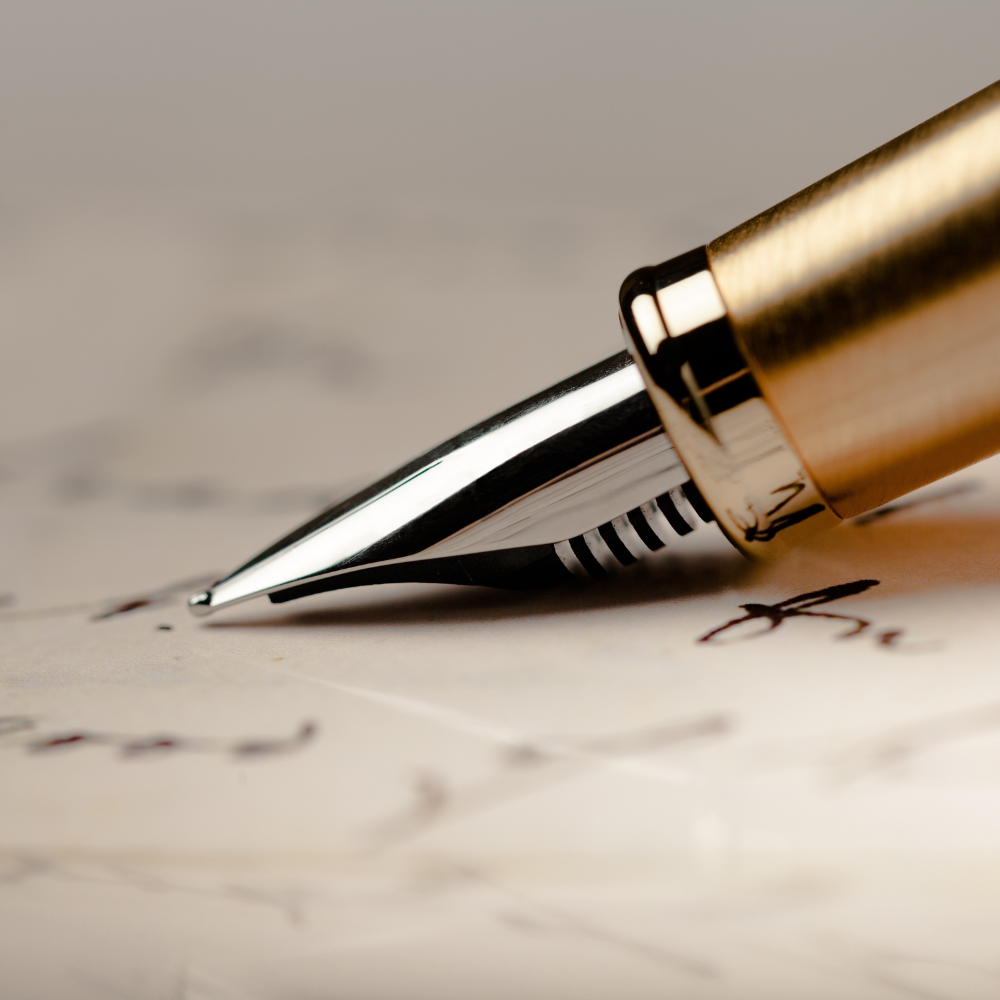
Ready to improve your handwriting with fountain pens? Check out The Goulet Pen Company's video!
Want even more content about creativity and drawing with pens?
Be sure to check out all of our creative chronicles!
Want to learn more about drawing?
Check out some of our other articles:
-Is a fountain pen good for art?
-Why do people like fountain pens so much?
-Do fountain pens get better with age?
-What is the most smooth writing fountain pen?
-What is better than a fountain pen?
